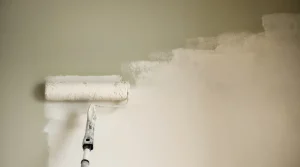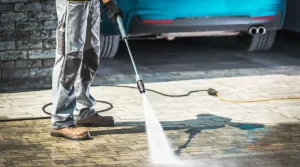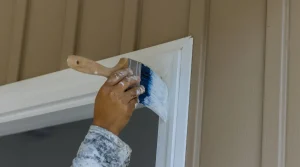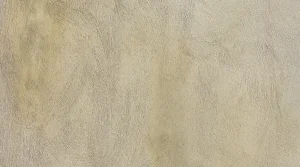Water stains on ceilings are unsightly and may signal deeper problems in your home. By addressing the root cause and following proper cleaning and painting techniques, you can restore your ceiling’s appearance and prevent further damage.
Key Takeaways
- Identify the Source: Addressing the origin of the water stain is critical to prevent future damage.
- Clean Thoroughly: Use a bleach solution or cleaner to remove mold and disinfect the area.
- Prime and Paint: Apply a stain-blocking primer before painting to ensure the stain doesn’t reappear.
- Call Professionals if Needed: For extensive damage or complex repairs, professional painters and water damage specialists can save time and ensure lasting results.
Why Do Water Stains Appear on Ceilings?
Water stains on ceilings are more than cosmetic issues; they often indicate a problem that needs immediate attention. Common causes include:
- Leaking Roofs: Damaged or missing shingles, poorly sealed flashing, or holes in the roof can allow water to seep through.
- Plumbing Issues: Pipes running between floors can develop leaks due to age, corrosion, or faulty installation.
- Ice Dams: In colder climates, ice dams can form on roofs, leading to water backing up under shingles and causing leaks.
- Clogged Gutters: Overflowing gutters can direct water into your home’s structure, leading to stains on basement or ground-floor ceilings.
Regardless of the source, identifying and resolving the root cause is essential to avoid recurring issues and further structural damage.
Steps to Remove Water Stains from Ceilings
1. Identify the Source of the Water Stain
Before addressing the stain, locate and fix its source. This might involve inspecting the roof, plumbing, or gutters. Major issues like roof leaks or plumbing problems often require professional intervention. Ignoring the source will only result in the stain reappearing or worsening.
- Roof Leaks: Check for missing shingles, flashing damage, or debris accumulation on the roof.
- Plumbing Leaks: Look for water spots around pipes, dripping, or unusual sounds behind walls or ceilings.
- Gutters: Clear out debris and check for blockages that might be causing water to overflow and seep into your home.
Once the source has been fixed, you can move on to cleaning and repairing the ceiling.
2. Clean the Stain Thoroughly
Water stains can harbor mold or mildew, which must be removed before covering the area. Follow these steps to clean the stain:
- Mix one part bleach with three parts warm water or use a commercial mold remover.
- Using a sponge or cloth, gently wipe the stained area to remove discoloration and disinfect the surface.
- Rinse the area with a damp cloth to remove any residue and let it dry completely. Use a fan or dehumidifier to speed up the drying process.
3. Apply a Stain-Blocking Primer
Priming is essential to prevent the stain from bleeding through the paint. Choose a primer specifically designed for water-stain coverage, such as:
- Oil-Based Primer: ProBlock Alkyd Primer by Sherwin Williams is effective for tough stains.
- Water-Based Primer: Quick Dry Stain Blocking Acrylic Primer is another excellent choice for water-stained areas.
Apply the primer evenly over the stained area, ensuring complete coverage. Allow it to dry as per the manufacturer’s instructions before painting.
4. Paint the Ceiling
Once the primer is dry, it’s time to paint. For a consistent look, consider painting the entire ceiling rather than just the stained area. Here are some tips:
- Choose High-Quality Paint: Use a latex ceiling paint that matches the rest of your ceiling.
- Use the Right Tools: A roller with an extension handle works best for large surfaces, while a brush can help with corners and edges.
- Apply Even Coats: Start with a thin coat and allow it to dry before applying additional layers.
Painting the entire ceiling ensures an even finish and avoids noticeable patches.
5. Consider Professional Help
If you’re dealing with extensive damage, or if the repair process feels overwhelming, consider hiring professionals. Water damage specialists and painters can ensure the job is done correctly and efficiently. Companies like Bergen Rockland Painters offer expertise in both water damage repair and interior painting, saving you time and effort.
Preventing Future Water Stains
Preventing water stains involves proactive maintenance of your home’s roof, plumbing, and drainage systems. Here are some tips:
- Inspect Your Roof Regularly: Look for damaged shingles, flashing issues, or debris buildup that might cause leaks.
- Maintain Gutters and Downspouts: Clear debris and ensure water flows away from your home.
- Monitor Plumbing Systems: Check for leaks, drips, or unusual water pressure in pipes.
- Improve Ventilation: In humid areas, ensure proper ventilation to reduce condensation that could cause ceiling stains.
- Seal Vulnerable Areas: Use caulk or weatherproofing materials around windows, vents, and other openings to prevent water intrusion.
FAQs: Removing Ceiling Water Stains
Q: Can I just paint over a water stain without cleaning it first?
No, painting over a water stain without cleaning it first can result in the stain bleeding through the paint. Always clean and prime the area before painting.
Q: How do I know if the water stain is from a leak or condensation?
Water stains caused by leaks often appear as distinct, dark spots and may grow larger over time. Stains from condensation are more diffuse and typically occur in areas with poor ventilation, like bathrooms or attics.
Q: What should I do if the stain reappears after painting?
If the stain reappears, it’s likely that the source of the water hasn’t been fully addressed. Reassess the roof, plumbing, or other potential sources of moisture.
Q: How long does it take for the cleaned area to dry before priming?
The drying time can vary depending on the humidity and ventilation in your home, but it typically takes a few hours to overnight for the area to dry completely.
Q: Can I use regular primer instead of a stain-blocking primer?
While regular primer might work for minor stains, a stain-blocking primer is specifically designed to prevent water stains from bleeding through the paint.
Q: Should I paint the entire ceiling or just the stained area?
For a uniform finish, it’s best to paint the entire ceiling. Painting only the stained area may result in noticeable patches.
Q: When should I call a professional?
If the damage is extensive, or if you’re unsure about the source of the stain or repair process, calling a professional can save time and ensure a lasting fix.
Final Thoughts
Removing ceiling water stains may seem daunting, but with the right approach, you can restore your home’s appearance and integrity. By addressing the root cause, cleaning the stain thoroughly, and using quality primers and paints, you can achieve lasting results. For complex cases or to save time, consider reaching out to experts like New City House Painter. With their professional touch, your ceiling will look as good as new. Call them at (973) 846-5552 or schedule an appointment online today.







